Around January 2015 I started messing around with a couple of game design ideas, in Copenhagen in between my job as a graphical artist and producer. The games were very simple, and were basically experiments or test rooms for trying out different mechanics and techniques. Even though I've enjoyed making games since I was a kid, I was fairly new to coding games - I've spent most of my career working with graphics, animation, and music.
That said, being used to handing in projects and putting reasonable goals into production, I managed to avoid the stalling preasure of my-first-game-is-going-to-be-my-greatest-creation-ever, and one year later I was releasing my first game Urban Pirate on one of the big game platforms. People I had never met before were supporting it, and most importantly,fans were looking forward to playing it.
One thing that has been central to me being able to do this is the instant online possibility of learning from others. Still, I had to make my own mistakes and learn my own lessons along the way. This article is for anyone wanting to create and release his or her own indie game, who is looking for a first time experience step-by-step guide. Here’s hoping that you can use some of this info for your own benefit.
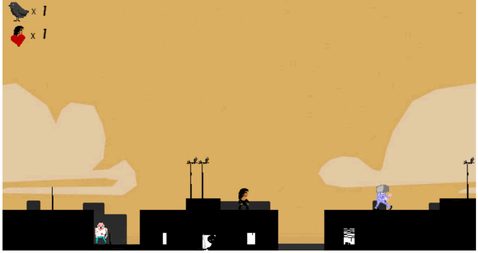
My very first platformer ever. Pretty bad-ass version of Giana Sisters. It never got finished.
I. Getting Started - Choosing Your Game Engine and Basic Game Design:
I had tried out Unity and some Java but it wasn't really my thing at the time. I had picked up Game Maker 8.0 (later I went with Game Maker: Studio Pro) for free and wasn't paying much attention to its kind but otherwise useless drag-and-drop system. I knew I wanted to work in 2D which was mostly my reason to use Game Maker. I learned all the basic coding by watching tons of tutorials, typing in the specific functions or mechanics I was searching for in search engines and found that since 2014 there has been a rapid growth of Game Maker (Studio)-related YouTube tutorials. This means you can learn almost anything with a few teachers online, each giving their angle on a wide spectrum of subjects; the perfect modern school as I see it. Also I finally realized that skipping the math-part of programming and game design is not only unrealistic and impossible but also boring. It's only when you get the math straight you're able to have fun and work with less restrictions. I'm only saying this to encourage aspiring game designers who are afraid of math, to dig up that already acquired knowledge of x, y, i, j and all that other crazy math shit (to say it straight out); get into it - if I can do it, so can you. Sitting by your desk late at night suddenly understanding and programming a thing you thought was impossible to execute, is not only uplifting but incredibly inspiring! I had spent all my time on the coding part, so my graphics were as simple as this:

The early alpha design of Urban Pirate
A tiny world of numbers, strange counters, and a main character with nothing to his or her name, and me... With no real idea of wtf I was getting into. Later I learned that this approach is the best when looking at an incomprehensible task such as releasing your first real game: don't start out by writing the entire story or drawing a thick book of original concept art - you will only experience what your game feels like if you actually create it. Staying open to changing things, even though it seems hard and repetitive is key. Whatever freak of nature you threw into the machine at the beginning, is gonna come out looking surprisingly different from the Frankenstein Jr you started out with. You might as well skip the paper work and get your keyboard fingers busy, at least with your first game, in my opinion.
All I really knew in the early stages was that I wanted to make a game in the urban crime genre. I wanted to create something turn-based with a touch of survival which made the players feel the stress and danger of being someone outside of society but in a non-victimizing way. What if I could make the players feel the joy of stealing food and meeting strangers...? I was unable to find any game out there that did the same so I went with it. I also knew I was going for the so-called retro-style graphics and 8-bit audio. Before engaging my sound engineer, I found some good chiptunes on Youtube to use in the alpha. This materialized the feeling of 8-bit audio without having to compose an entire soundtrack and a set of sound effects already.
Even though the final game turned out to fit better into the role playing and strategy genre, I thought that 'streetwise crime simulation' sounded awesome! I never really have been able to find a game that truly embraces and shows the urban alternative culture such as the one of the 'urban pirate' so I thought I would stick to that and at least make a game I thought was fun. I wanted the game to simulate the life of someone who has nothing, someone who slowly grows in both reputation and wealth - not the American dream, more like the American nightmare.
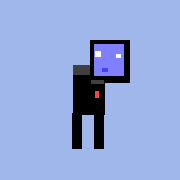
II. The Alpha - Understanding Game Testing and Social Development:
During the spring of 2015 I learned that game development consists of several complex steps. Not only do you have to actually make and design the game, you'll also have to start testing it on people once you have a playable demo of your game, and through this creating the first hype or social activities around the development. When wanting to connect to players who I needed to test my game I've had good experiences in the following forums:
- Reddit: a sub-reddit such as /r/indiegames and places like that are great if you're looking to connect with players or developers. Remember to put links to your work in progress as you submit news and features.
- Twitter: use #playtesting #gamedev and #gametesting as tags and address certain players and YouTubers who are into testing games.
- TIG: the Playtesting discussion room at the TIGsource forum is really great for finding a great deal of people who are willing to play almost anything all around the clock, especially if you're consistent throughout a couple of weeks.
- Devmaster forums
- Your game dev tool (ie. Unity or Game Maker) forums - though I must admit the Game Maker forum was not really that helpful. I had a moderator promising me all kinds of stuff without ever getting back to me... But don't put too much into the promises of strangers - just keep posting and engaging people.
Note that you'll have to be a member of the different forums in order to comment and receive messages etc. You better keep track of all your profiles and stay active in order to not seem arrogant or like you don't care when you're asking for people's help - after all they are working for free on a product they support so give something back.
I made sure I had a demo that would actually work which I could upload to a site (like Mediafire) where people could then download it and (hopefully) respond with feedback via a questionnaire. You can make one yourself by using an open document service such as Survey Monkey or Google Docs.
I simply put in the link to the questionnaire in the blog posts I did in the forums and about 20 people had filled it out after a couple of days. It wasn't much and not as many as I had hoped for but it made a strong impression on me to hear the actual anonymous reactions to my work in progress. Also I had never showed the demo to anyone else so this was actually my first step of becoming live and part of the game development community worldwide.
Lesson: It's very important to have others than your two best friends testing the game because they will be too kind or even know you enough to fill out little blank spaces that a person in a faraway country finds 100% unfathomable if they never met you, don't know your sense of humor, and don't have much time to waste. In other words: a great way to get your ass on the small map and get your early game development in shape is by connecting to playtesters, players who like your genre or style or just good people who like your initiative, your design ideas or whatever. Everything seems doable once you start connecting. And stay connected! It's not the end of the world if you lose touch with the contacts or players who you have interested but you might have some people following you all the way from the drawing board to the Steam store and they are your new friends, which means you'll have to stay in touch and have something to say. These people can be very supportive and wise about your game. Urban Pirate already had a handful of fans after a month on Twitter who seemed like they knew the game better than myself.
The first let's play of Urban Pirate ever was made by Youtuber Silicia and it completely turned my day into a bonus birthday - it was like watching my game for the very very first time; only by watching Silicia play I could see the game for the first time like it really was, in its true form. It felt like a gift that someone had taken my really trashy and non-self-explanatory demo so seriously. Luckily he liked the game even though it was at its earliest stage.
Lesson: watch people play your game as early on as you can. Even if the errors are forever caged inside the Youtube framework for everyone to watch, even if all the game does all day is to crash and burn. If you know someone who knows someone who wants to test your game, then go and watch as they play and take notes as everything that might have seemed a bit hard to figure out timing-wise or story-wise or anything like that, will now become crystal clear before your very eyes!
I had a trust in my game's core mechanics and was keen to continue with the coding and design of the alpha version. I was still working on the story, the concept, and the mood of the game. Still trying to figure out the game play while weighing the playtesters' comments heavily as I went along.
I released the very first alpha demo in August 2015 with very little to the game, poor graphics and without the proper sound design. Even though it was extremely faulty and trashy-looking - people got it. They enjoyed running from the store detective and almost starving to death due to an unwise choice of smoking weed before eating or perhaps being too lazy to socialize. Even though the game was shit it still got me a following and a group of people who were willing to test my builds. That's how cool all you gamers are: you see right through us game developers and our projects.
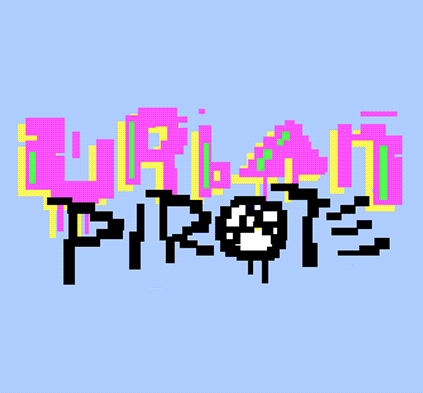
This was enough to encourage players to try it out...
September 2015 I joined Twitter and found out about the #gamedev, #screenshotsaturday, #indiedevhour, #pixelart, and #indiegamedev tags which helped a rookie like me a lot. Not only did other people get to see what I was working on, I also had a lot of inspiration looking through the feed of my account. On Reddit I discovered everything from hints, hacks, lectures, and god knows what! I naturally came into a routine of waking up, checking Twitter and Reddit, checking all the sites and forums which had people excited about my project and then started working on the programming and graphics.
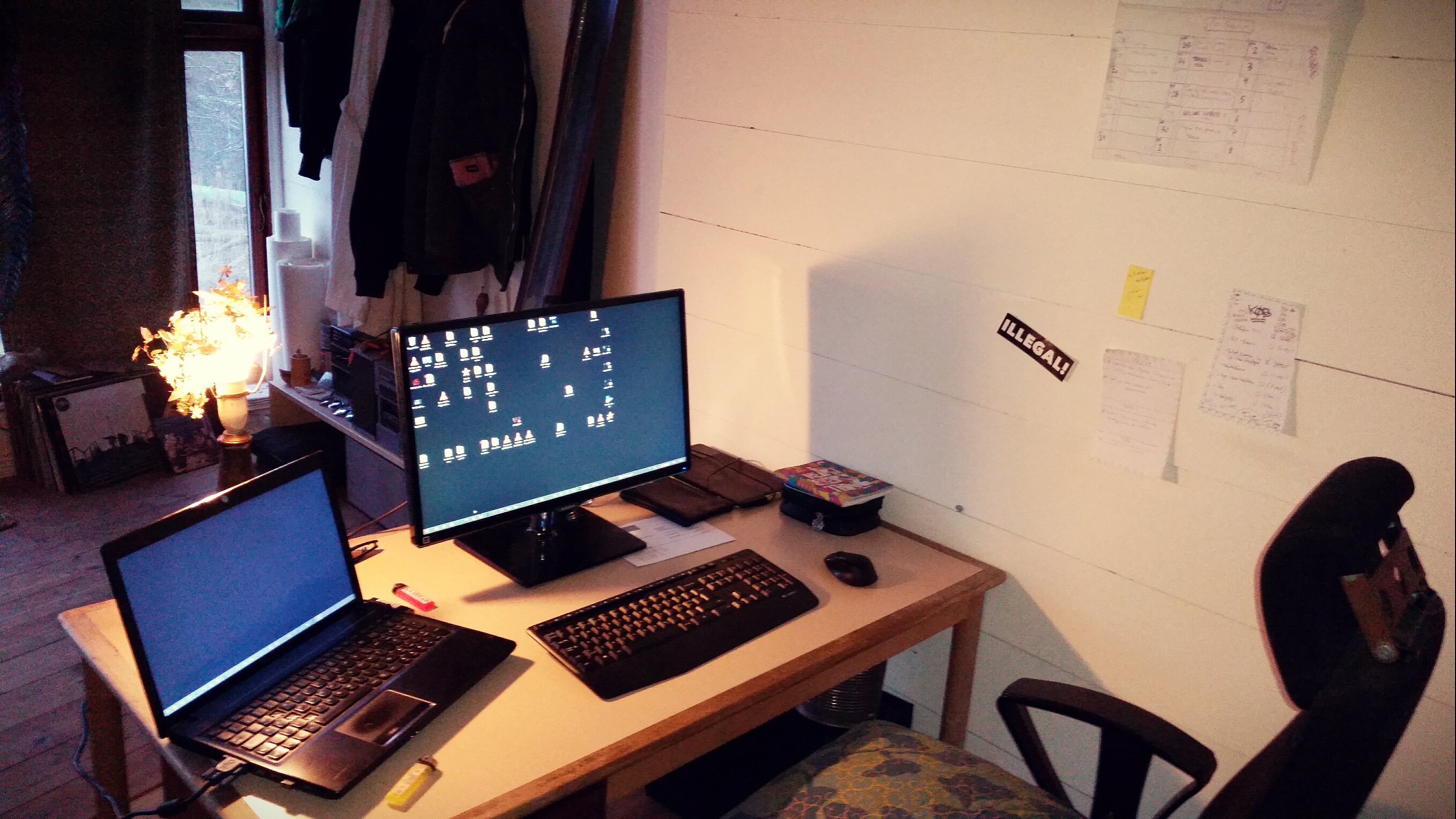
My work space back then. In Christiania, Copenhagen Denmark
By November 2015, after posting lots of screenshots on Twitter, I had around 500 followers. I had also been posting a steady wave of tweets linking to my demo. I got around 150 downloads within a week due to the catchy and provoking title: Shoplift and Dumpster Dive Your Way To Freedom - New 2D Crime Sim Needs Playtesters (something like that...). I had to learn how to make GIFs and do engaging and meaningful tweets. In the beginning I just lined up some stills of the game on a timeline in Photoshop and turned them into a GIF but I later learned that the ULTIMATE way of making people interested in your game is to give them actual recordings of the screen you're working on. There's a ton of ways to make a good animated GIF but for a rookie I would suggest using a free tool such as Instagiffer - it's a bit slow but does the job, without you having to open Photoshop or something heavy like that (you can always get into that later).
![]()
A quite simple way to make a decent animated GIF is to:
- Record your screen as you're playing your game, programming or showing off your project. A GIF usually lasts between a couple to 15 seconds (some are longer and therefore smaller in size, or lower in quality).
- Save the file as a .mov or .mpg4 (if your screen recording tool doesn't allow .mov exports - only .flv for example - then use a free converter such as ZAMZAR to download a .mov of your recording).
- Edit the movie clip: (you might want to skip this if you're not making a trailer or game play GIF) Drag the clip into your movie editor (try Sony Vegas, PowerDirector or even your computer's default movie editing tool) and make an edited version of your movie clip so it only contains the most important part, leaving out the insignificant moments. A GIF should be an extract of peak moments, not an entire game play video.
- Import the file into a GIF export-related program like Instagiffer which supports .mov files.
- Select the size (the bigger it is, the larger a file you'll end up with and places like Twitter and Tumblr have restrictions to how large your GIF can be, about 2 to 2.5 mb is the limit, I think?), set the quality and length of the GIF.
- Export the file to .gif (in Instagiffer it's automatically made into a GIF, in Photoshop you have to Export to Web and set the file to be exported as a .gif file.)
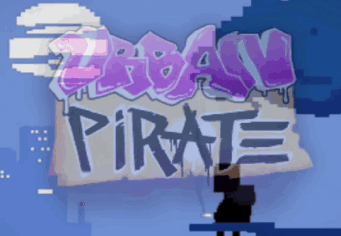
Example of a GIF made for promo tweets. 2.3 MB in size
I was encouraged to add several features to the game as well as removing and adjusting some of the mechanics. I was working to understand the difficulty experienced by the players and had found that it's an entire art form to be good at balancing that: the level design is essential to the early development even though you have no clue how it is experienced by players at first.
By the end of 2015 I had a proper demo of the game with upgraded graphics, a small story and a game loop I was very happy about. The core group of testers (consisting of about 10 people) were pretty happy with the game, so I took it up a step, joined IndieDB and officially released the alpha early access version of Urban Pirate. I now had even more people playing the demo - a lot of whom I think bought the game later on and helped me get through Greenlight.
The game had come a long way and it was time to take the game to the beta level and start connecting with the world and working on the polish, refining the mechanics and graphics. By the beginning of January 2016 I had put together a much more polished build with original sound design made by Jonathan Aardestrup aka b. Magic Samples and myself. The game had really started to become alive due to the custom made sound effects and new graphics. A couple more mini-games, and new skills were added, and the game was fun!
III. Realizing Steam Greenlight - Keep Your Game Alive:
To be honest with you, I only learned about Greenlight and strange/cool or even obscure indie titles on Steam half a year before I submitted Urban Pirate. Which means I began development before I even knew of self-distribution and self-promotion. I didn't care if the game got sold or not. At that time I didn't have a strategy and I didn't know anything about timing. I just felt it was time to show my game to more people and hopefully get it on Steam. The reason I got excited about Steam was its huge user base - and the fact that games such as Papers, Please and Gods Will Be Watching seemed to have a large group of niche followers that accepted the rather simple graphics and tough game play. It was obvious that Steam, even though being fully dedicated to selling millions of AAA copies, had a lot of users who were into retro-style, simple graphics as well as a more challenging and less babying game play.
Late January 2016 I joined Steam, bought the Greenlight ticket (90 EURO - the money goes to charity) and spent a couple of days preparing the game's Greenlight landing page. Before I entered I had made
- A game trailer: About 1:25 long, with some hook lines to introduce the game play in an exciting and cinematic way. YouTube statistics showed that most viewers watched for about 40 seconds. I don't think your first trailer needs to be more than one minute long including the outro screen, title or credits. If you don't like it after watching 40 seconds, you're probably not gonna like it after 50. If you can't make a professional or at least well formatted video, I really suggest you get someone to do it for you (there are a lot of talented people who will do it for free just to be a part of the story). That first impression is so damn important! Either that or you're making the new Limbo which needs no more introduction than a little game play due to the extremely atmospheric graphics. Urban Pirate doesn't have extremely atmospheric graphics so the first trailer needed some story telling, music and dynamic editing. I recorded the screen, the game's core mechanics and a couple of cut-scene graphics. I edited it and put one of the few original songs I had made ready as its soundtrack.
- A theme song: Luckily I have been working in the music business for 15 years so making some tunes wasn't a big deal to me. It was 8-bit (harder to make, I think, than the 16 and 24 bit audio I'm used to, funnily enough) and it fit perfectly into the rough atmosphere of the graphics.
- A logo and a main image: I had designed a logo and come up with a very simple main image (capsule). I didn't spend too much time on this. But I think I was lucky. I think you should spend time on it. Make a couple of specimens and show them off in the forums you're already participating in - listen to what fans and players have to say about which one is the best.
- A description: Having posted a lot on many different sites I had refined the description and I was becoming pretty good at pitching the game. I even asked in the questionnaire if the playtesters could describe the game in one sentence. It helped me to see what the players thought were the most important parts of the game. I ended up with "2D, turn-based, urban crime sim. A non-linear adventure in a modern world of piracy. A radical mix of Strategy/RPG/Sports & Simulation" and it worked.
- Simple graphics to make the game's description look a little more interesting and make it stand out. 635 pixels of width is a good size for a .png banner to put as a header in your description, like this:

- A download link to an early access playable demo (I used a free link to my IndieDB page).
- A link to my game's official website. You've got to have one. Later you'll be happy that you made a proper one from the beginning. It's very cheap and you'll have no problem coding it once you're good at programming games.
Once you launch the game on Greenlight BE SURE to have all your assets uploaded without any errors or stupid shit like spelling mistakes in the title (or description) because during the week after launch Steam will put your game in front of a lot of players and they will judge your game very bluntly and direct. Don't come back like, "eh what about this trailer then", or "what about this more catchy title". Be sure of what you're putting up: players are fed up with half-assed games and brief ideas. Even if the idea is great, your presentation needs to be in order. And you need to have tested out your product on people before you launch. Otherwise the community lets you know.
The great thing about Steam is the large number of active gamers who are awake around the clock. They will comment on and share your game if they like it (hell, even start a fan group!) meaning that they will also slaughter you like a hangman on a bad day if they sense you're just copying another roguelike or shooter. I was lucky that some cool people who understood the humor and intention of the game, went and left positive and uplifting comments on my page. I think a lot of gamers on Steam enjoy alternative games, so make sure you emphasize that edgy part of your game. Don't be ashamed or hold back what's really crazy or special in your game. If people like the style and mood they will be supportive!
There are yes votes, no votes and ask me again later votes. In the statistics you can see how well your game is doing. There's a diagram which puts the yes votes up against the no votes and no matter how cool your game is it will get no votes. Also it shows a big X % in the corner where X is how far you relatively are to being one of the top 100 features. Your current rank, I guess, but to me it didn't make much sense. The 'Cumulative 'YES' Votes (per day)' has your little bright green line up against some major actors in the field that have a shit load of traffic going toward their games. I guess if it's your first game, and you're very new to everything with much less traffic going your way, your graph will look like a little grassy hill in front of Mount Everest or the Kilimanjaro.
A screendump taken one day after submitting Urban Pirate to Steam Greenlight.
In the circle diagram it says 37% Yes please, 61% No thanks, and 2% Ask me again later
I kept working on the development. About six weeks passed and one morning I had received a mail from Valve congratulating me: "Your game Urban Pirate has been greenlit" (not exactly that but you get it).

Before that, during those six weeks, I had searched for discussions about the Greenlight stats system but couldn't find a clear answer as to how many yes votes you needed to be "accepted". I had read some articles about developers whose games were on Greenlight for months and I was finding it hard to relax not knowing if I was about to reach my goal or not. I needed a health bar or something to indicate how well I was "playing the game".
I continuously kept producing new GIFs and showing them off to the crowd on Twitter, the Greenlight page and IndieDB. I communicated with about 10 journalists, writers or reviewers who were interested in playing and reviewing the beta demo. Here are some of the good guys and girls who stand up for the niche games:
- Indiegames.com
- Techraptor.net
- Siliconera.com
- Rock, Paper, Shotgun
- The Gaming Ground
- Wraithkal.info
- Lost Video Games
- Operationrainfall.com
I had made a list of at least 80 mail addresses to write to, and I wrote a personal mail to each one of them. The response rate was about 10%. I was happy with that, and awesome reviewers like The Gaming Ground really made my day with this video (I'm really into his tempo and humor, you should check out their channel):
A good way to write to game journalists (in my experience) is like writing to your pen pal when you were 10 and there was no internet: You're polite, you stick to the point, and fill in as many goodies as you can, because Lord knows when you'll hear from each other again! Goodies meaning:
- a (Steam) key or download link to the demo or full game
- a super tight, short, and catchy description of your game
- a link to a teaser trailer or game play trailer
- reliable quotes from other journalists or reviewers
- a link to your press kit. There's a limit to how many links you should send in the mail. It can be exhausting and messy for a writer to receive 100 mails a day with 10 links in each...
Along the more established writers were a handful of small Youtubers who supported me, and I think that really helped, so I would recommend spending a lot of time trying to connect with these journalists, Youtubers, streamers and writers. There is without a doubt ten journalists and Youtubers, at least, for each strange, funny or alternative niche genre out there. All my efforts payed off 'cause, like I mentioned before, the game got greenlit after six weeks on the bench. I was very very happy, but also a bit confused. The yes against no votes had changed a bit but not significantly. But there I was. Excited as f*** to be selling the game on Steam. It also had an impact on my process of developing the game (after all the game wasn't finished at all) and I began going for some more ambitious goals such as achievements, XP (called Street Credit in Urban Pirate), more characters and skills, and different endings.
VI. Creating Your Steam Account - The Checklist
Creating the Greenlight page is one thing but setting up your game on Steam is something else. You are granted access to Steamworks which is Steam's developer platform where you upload all the data, the graphics and finally your game. Getting to know Steamworks and how everything spins is quite a task, so here are some points to look out for as you're finishing your game and preparing the description, the capsules, the screenshots etc.:
Becoming Familiar With Steamworks: In the beginning it can be hard to figure out how to ask for help and how to access the manuals or documentation. I think the best way to ask for help is by entering the developer forum on Steam (only developers have access) and start a public discussion about your issue. Don't expect to find an email address that gives you direct support. It seems Valve doesn't work like that. Steamworks uses a very complicated and detailed platform, and it took me about a month to really get to know it. Also, remember to read through the documentation (the Documentation tab on your main page in Steamworks).
Bank Details: You must have a registered bank account associated with your game company name. I started a company by the name of BD Games (standing for BABY DUKA Games) as a part of my main company called BABY DUKA. In Denmark, where I live, it's a good idea to register a company when receiving money from Valve which is transferred to your account at the end of each month. When you have a company, you're able to keep the income and invest it in future projects without paying taxes off the gross. There's a bunch of details related to how you should establish yourself depending on your company's location, so take your time to figure it out. It seems frightening to some in the beginning, but getting some help from someone who knows more about it can be a good idea if the words VAT or taxes make you shake.
The Checklist: There's a bunch of graphics you need to upload in order to be able to set your store page live. If you're not that much into dimensions, sizes and formats, I suggest you hook up with someone who's good with Photoshop or GIMP. The main capsules really have to represent your game well, so start early on preparing the logo, the style and show the different ideas to players to get their opinions. There's an entire checklist regarding both your store page and your app build (your game) which has to be 100% perfect in order to click the 'Launch' button.
Trading Cards, Achievements and Stats: If you didn't know Steam has a variety of extras to encourage play time, communication and competition. They are optional but highly recommended! You might want to focus on your game and perhaps you don't want to pay any attention to any external features but I really think it's something you shouldn't miss out on. There are the Steam Trading Cards that basically are like baseball cards - all you can do with them is to collect them or trade them. You have to design the cards yourself which is super awesome! The cards 'drop' into the player's inventory as they play. It's funny to watch your very own and original cards being traded among players and they represent a relative value.
Urban Pirate trading cards on the Steam Market
The trading cards don't need extra coding (you won't have to write any new lines to your game code) as they are automatically dropped into the hands of the players through Steam's system. The amount of trading cards you should put out depends on how big/long your game is. If you're expecting an average player to play for 10 hours perhaps put in 5 cards. If you expect the players to play for 50 hours put in 25 and drop one every half hour. This is something I'm not too sure about actually, but it seems people are happy with my little set of cards (players play about 7 hours on average and I made around 5 cards, as I expected the game play to be 10 hours average). The Steam Achievements need some coding in order to work, but it's extremely easy and a lot of fun to implement! If you're designing your game specifically for Steam you should really consider the achievements to be an important part of your game. It's basically an external list of tasks to fulfill and some of them are encouraging enough to give your game more re-playability. I spent a lot of time figuring out how to do it (I didn't get a word of the stuff mentioned in the documentation actually) and it was much easier than I thought - perhaps the reason why I couldn't figure it out in the beginning was that it really only was a few lines of code I had to add. I used Game Maker: Studio Pro to write and export my game and it has a built in script that exports a steam_api.dll file into your game folder which launches with the game and makes another Steam user able to receive certain messages such as "You've just unlocked an achievement!" These are the lines of code you'll need for the achievements (written in GML (Game Maker Language)):
if (!steam_get_achievement("TAKE_FLIGHT")) //If you haven't unlocked the achievement TAKE_FLIGHT
{
steam_set_achievement("TAKE_FLIGHT") //... then set TAKE_FLIGHT to be unlocked!
}
Voila! Because the api is already connected the player which unlocked the achievement called TAKE_FLIGHT will get a notification in the form of a small box with a message and your graphics in it. It's addicting! Fill in the code wherever as a result of whatever. Make as many as you find suitable but keep in mind that the graphics both have to show the locked and unlocked version. It's actually a lot of work uploading and designing the icons but it's worth it!
The list of Urban Pirate's achievements (16 in total) on the day the achievements were released.
The numbers show the amount of players who have unlocked each achievement
relative to the amount of players who activated the game
Implementing stats is similar, but different. I won't get too much into it here because I don't have enough experience with it, though I'm looking forward to implementing it in new productions.
Pricing: This is a hard one to go by because this subject is very complex and often hard to document. One thing's for sure, however: too many small studios and developers sell their games too cheap. Don't blame the price for your lack of sales (unless of course the price is really high like 14.99$ or 19.99$), instead try to figure out whether your game gets noticed by people. If your game had the chance to be in front of a lot of players it might sell even though the price is 5.99$. Also, remember to add a launch discount as the game comes out, and if you're selling your game (like I do) for 6.99$ don't set the launch discount to 15% (like I did) because, honestly, who cares if they save a quarter. Instead set it to 50% so the discount has a little more effect on the buyer. This logic might lead to a lot of sales in the beginning which is essential to both the reviews you will get and future attention. Also Steam measures the amount of games bought within the first days and if your game does really well they might keep you further up the ladder towards the front page which means more exposure and units sold. Also remember that the share between you and Valve is 70/30 by default so if your game costs 4$ you'll only make 2.80$.
Once I got the hang of the many different points on my checklist I started preparing for launch. Before that though, I made sure that my game was tested to the max, that the program was working on the platform(s) I was porting to (Windows only in my case - the Mac and Linux export is still something I want to make happen but it hasn't been easy!!), and that players who were going to buy Urban Pirate, would receive a full and finished game with a support hotline (you have to assign a support email to the store page and you should choose one that sounds sober and check every day - redirect it to your main email - once the game launches). You should build your game so it's easy to patch things up if a bug or spelling mistake or anything annoying should pop up like "I can't get the chainsaw to work!!!" or "Level 7 crashes every time I go through the blue door!@@!!#". Make sure to be ready to answer all the players and users who have a comment to how the game works. If you're game is very successful and has ALOTTA comments and questions that need answering you can make deals with moderators who are users who use Steam a lot and can help you answer, or clean up the community hub which will be the place you post updates and where players post videos and comments etc.
You can release your game on Steam (it doesn't have to be finished) during the alpha and beta stage and even sell it if looks good enough. Here you can get all the feedback you need and use the Steam community to be your testers alongside the base of playtesters you already have. Some titles are basically built to fit into this form of development.
V. Launching Your Game - Marketing and The Big Bang!
I had spent a lot of time polishing and finishing the game and it was time for launch. From April till June I had worked on Urban Pirate 10 hours a day on average, and done everything I could to optimize the experience and polish every little detail and animation (even though looking back I should have spent more time on this). I put together a Steam Release trailer to be ready on the day of launch, and I started working on the strategy to get attention and attract gamers and reviewers.
The Steam Release trailer looks much better than the early teaser trailer which made the fans happy. The trailer was viewed ~8000 times during the first two weeks of launch
I hooked up with a marketing group who could help me broaden my reach on Twitter, and reach out to gamers and journalists by writing a professional press release. It cost me around 1,750$ and I'm not sure if I chose the best solution but it did give me a look into the world of indie marketing, and I'm sure that some of the bigger blogs wrote articles based on the press releases they sent out. We decided to send out the press releases one week after game release and we ran a Twitter campaign for about a month and half from the day it came out. It's obvious if I look at the numbers that sales declined after the promotion stopped. This could be relative to other factors though, but I believe it's important to stay active for at least six months of day-to-day promotion post release. This might seem repetitive and sometimes like talking to a wall, but you have to continue to put excitement and content into the community: either by designing your game in a way, so you're able to constantly renew it, mod it, or perhaps expand it, or by showing behind the scenes stuff or posting discussions or new graphics. There's also the DLC option which is quite popular on Steam. There's a space called the Steam Workshop on your page. Here players can upload their suggestions, hacks and new designs and other players can vote in order to encourage the developer to put it in the game.
My goal with the first four weeks was to sell at least 500 copies, get a feature on one or two of the big blogs, and hopefully witness pleased costumers. I chose to release the game one week before the Summer Sale, which was due to the expectation that right after the Steam Summer Sale gamers don't spend that much money. Instead I wanted the game to be available with a discount which then continued into the official Summer Sales of 2016. Because this was my first release, I didn't know much about timing and the market. I was just impatient and I didn't want to wait four months to release the game. I should have waited and polished the game even more, but I was very eager to release it. It turned out just fine and one month after launch (17th of July) I had sold about 400 copies, featured on Rock, Paper, Shotgun, Siliconera and Gambit Magazine (among a bunch of other sites) and the Steam reviews at the time read positive. The game was out and as so many others I looked at all the reviews, the statistics, the units sold, the comments, all day every day for weeks. It was a true thrill! I also managed to get Urban Pirate on the Humble Store before launch and some players preferred buying the game there.
This is one of the first things you will see as a Steam user when you browse games, so reviews count
The day your game launches on Steam they promise that a minimum of one million Steam users will see your title - meaning they will look at it, not necessarily interact with it. Perhaps some will click on it. I mention this because it is extremely important to consider every little detail before your game launches. (EDIT: Since late October 2016 Steam has changed this feature as you launch your game. They have a new approach where they want to put your game in front of users they think would be into your product. What this means, I'm not a hundred percent sure about?) Not a day after. It's obvious that your small indie title gets put in the front by Valve as it launches because if it sells really well (who knows!!?) they will keep the hype alive and perhaps sell even more (remember Valve is looking to score the full potential of their 30%). If it doesn't sell well the slot goes to a new title which might sell better. So unless you can prove you've made an exceptional product you will slowly go further and further back in the catalogue. In order for you to optimize your launch, here's a list of stuff that's good to know about as you're preparing for it:
- Customer Reviews: People will review your game once it's released, and other players who also have the game can vote whether they find the review to be useful or not. Steam changes the review system quite often. It's hard to tell what's fair but it will have an impact on how users are going to look at your game before they buy it. Right now (September 2016) the review system is only based on the reviews made buy users who bought the game directly on Steam. To some this means that the fans and supporters might not be able to vote up the positive comments and reviews because not everyone has bought the game on Steam and if a user who got the game for free writes a positive review, it might not become visible at first to the users who glance over your store page to decide whether to buy it or not. Another important note: don't start discussions about your game by replying to the reviews. Only reply if it has direct meaning to a specific subject like, "I liked the game but it seems that I can't exit it without pressing alt+tab".
- Bugs and errors: Every game will have unforeseen errors destroying the game experience for some unlucky users. Make sure to respond promptly to the users' complaints or questions. This might be the very very last bugs (you wish) that you didn't see yourself. Upload a new package to Steam and make an announcement on your store page explaining the patch or update.
- Uploading your game to Steam via the Steam Command Prompt: If you're unfamiliar with command prompts you should take a look at one. On your pc try pressing the windows button+R (for run) and type in cmd.exe in the text box, then hit enter. You'll see a prompt, a small black window with white text. Don't be afraid. You're not an old school hacker now. It's just a program where you can type in commands just like code in your game engine and make stuff happen. When you're a Steam developer you'll get the permission to download and use their sdk (Software Development Kit) which is a folder containing very important files to make your computer able to talk to the Steam servers. In this folder you'll find an executable named steamcmd which will look the same as the prompt you saw but this one is customized to make you able to upload your content (your game) to Steam. There's a good tutorial on the Steamworks documentation page regarding these processes. You should master it before your game launches (upload test builds that only you (or your partners) can access and that are invisible to public users) in order not to ruin your launch day!
- Review Keys and Scams: What is this you may ask? Christmas eve? No. They are terms. Special parts of a unique language called modern gaming, where you'll be surprised how much your small game is worth in reality. A Steam Key is similar to an activation code or CD code like the ones in the game boxes back in the day. Players can activate games by typing them in and activating the game in their Steam client. You can easily order the keys to your own game from your Steamworks page. Don't be afraid to order shit loads of keys but handle them with care and make sure when you give out plenty that it will pay off. After all every key is worth as much as your game! When your game drops it pops up in the NEW tab in the users' clients, and you'll be surprised how many random people will address you within the first weeks of release. Some of these seemingly good-hearted people are only trying to snatch your game so they can sell it on game key sites. They don't care about your f*****g game and there's no reason to give them 400$ worth of games. Often they don't even bother to write a personal mail and I've had a couple with the wrong name in it. They claim to be a Youtuber who has, 1,234,643 subscribers, and it's quite obvious that it's false. But in case you do want to check if it really is the famous Youtber writing you, visit their channel page, find their business email, and verify that he/she really is the one writing. Perhaps the best way is to reply with a thank you to the key request, and then ask the person to write you a personal message from their channel to yours in order to verify. If it's one key you might as well send it instead of spending half an hour being Sherlock Holmes though sometimes they ask for 10 or 50 keys and you should be sure before you hand out that many.
- Giveaways and Gifts: There are a lot of groups managed by Steam users in which you can acquire free game keys if you do certain stuff. If someone contacts you via Steam or by mail asking you for a bunch of keys as gifts or giveaways, it literally means that they will give away your game for free. The argument or deal is that you'll get more people to play your game and get more reviews on Steam. I guess, since Steam changed the review system this is not as relevant to developers as before. I definitely got a group of people playing my game because I gave the games to the curator of a Steam group but besides more people playing it, it's not worth much if you ask me. Often the owners of the groups are trying to grab your game and don't care much about it or you for that matter. It's more valuable to give giveaway keys to cool Youtubers who will hand out your game to subscribers as gifts in order to gain more traffic to their channel. That's more fair because they actually play, show and/or review your game.
- It takes time for Valve to look through your game before you can launch it. You should make sure to upload everything at least five work days before your launch date.
- Also don't launch your game during a weekend since there is no guaranteed support from Valve's side.
Once your game is out you will probably also be asked to participate in a bundle which is a bunch of games put together by a team with a website, where costumers pay what they want for a package of usually 6-10 different games. You share the revenue with the other owners of the games in that bundle. I would advise you not to participate in any bundle sales before 4-5 months after release but I can't argue for or against it in this article. Instead go look up some discussion on the subject. Don't put a desperate discount on it either and don't change the price on day two. Stay smart, keep cool.
VI. The Aftermath:
So I learned all of this via trial and error. It was beautiful but tough. It was a lot of fun, but very little sleep. I wouldn't have done it any other way... BUT! I would honestly wish someone had made this long ass article before me, and before I was launching my first game on Steam :D
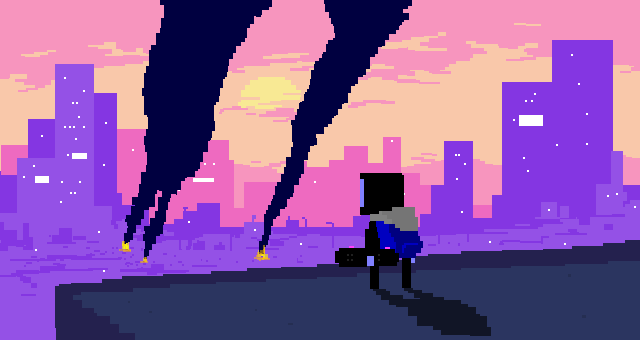
Currently BD Games consists of myself, a sound engineer and a couple of fellow pirates who assist with web, design and testing. After the release in June we've had the pleasure of being in touch with a lot of exciting people from all over the world. It has been great experiencing the game, and regardless of how well Urban Pirate does I'm already hyped to get to work on my next game. (EDIT: Re revenue, I think you shouldn't expect your first production to pay off big time. It is very different from production to production how much you spend and how much you earn, as you are launching your first game. Also, think more of your first game as something that will create the base of your game studio's audience. The more people who know about your game the better - even though it might cost a lot!)
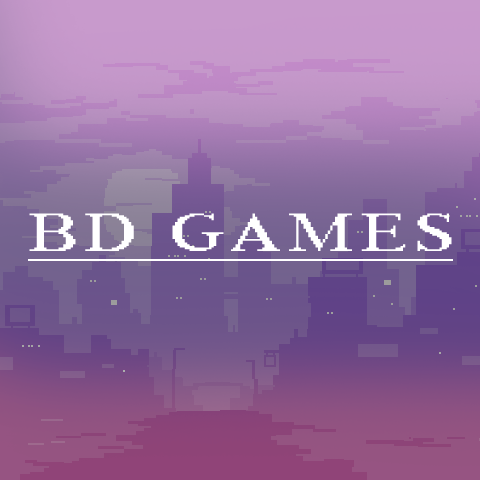
I can also recommend releasing your game on awesome sites such as Itch.io, IndieGameStand, GOG.com and the Humble Store.
If you have anymore questions, requests, business requirements hit me up: contact(a)babyduka(dot)com. Otherwise if you want to talk about Urban Pirate or any collaboration hit us up urbanpirate(a)babyduka(dot)com! If you just wanna stalk go here:
The Urban Pirate Steam Store Page
The Official Urban Pirate website
I hoped you enjoyed my post mortem and hopefully we will bump into each other again. Hopefully it will inspire you to get your first game out there and not be afraid of failing and trying your best.
Best of luck and ohoi!!
- BABY DUKA & BD Games
#GMS #maker #gamemaker #GML #first #making #a #indie #how #to #get #your #game #on #steam #unity #urban #pirate #baby #duka #babyduka #UrbanPirate
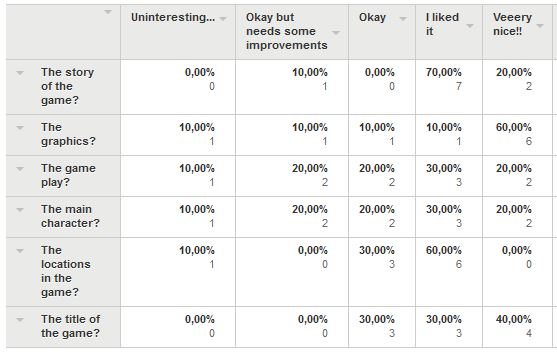
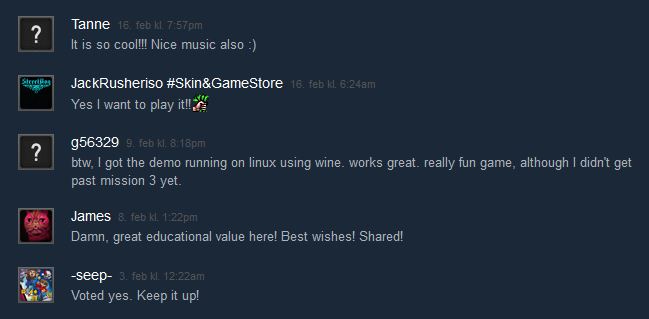
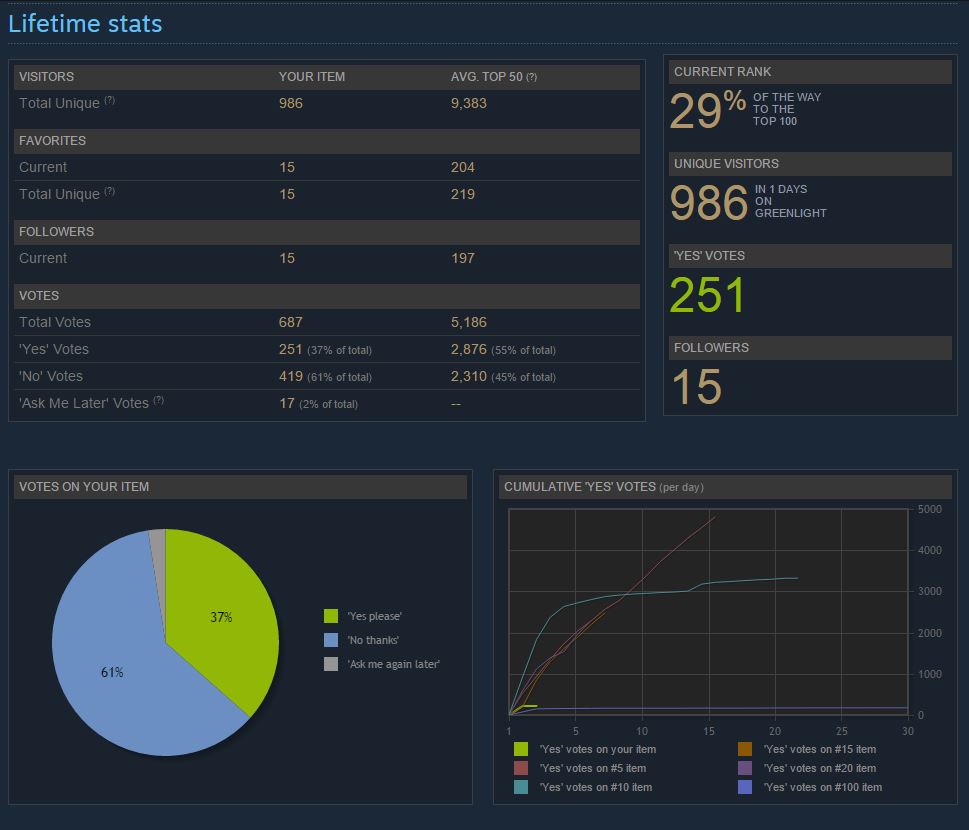
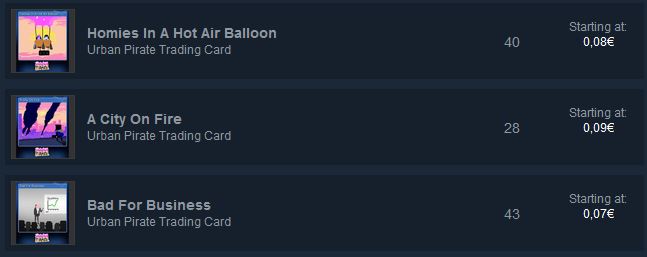
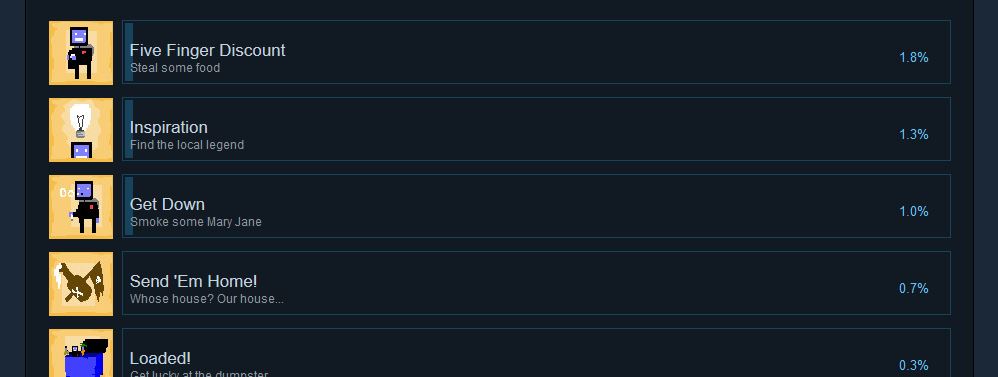
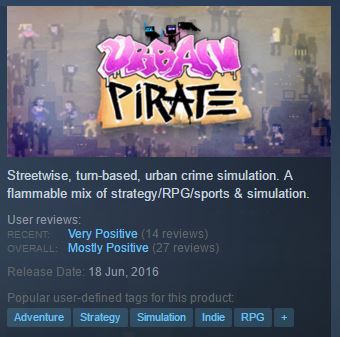


wow .. thank you very much about your article!
I'm sure it will help me a lot to get my game out. I actually today prepared our game for Greenlight at Steam, but as I see I'll take little bit of time and polish what I prepared there.
Thanks again man!
You could have added some sales figures.
You say you spent money on marketing and by the end you say you're working with a team. Is it entirely funded by your game's revenue? Are the people you're working with having side jobs, are you the side job?
Urban Pirate was funded by money I had from doing music related jobs on the side. I run a production company working with audio, graphical art and video game development (babyduka.com). With these money I paid the marketing group. When the first money came in from Valve, after releasing the game, I paid the sound engineer, so I guess you could say it was his side job. The revenue of Urban Pirate is now put into developing the next game (rent, gear). We're not paying ourselves salaries yet - you gotta start slow, I think, and wish for the best, and make the best game you can. I could put in some sales figures. Thanks for commenting!
Thanks for posting this article. My game was greenlit late this summer so I am starting to wade into marketing and steam developer. I could definitely use all the advice I can find.